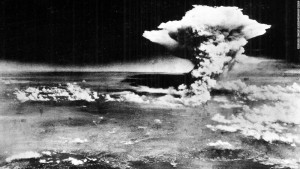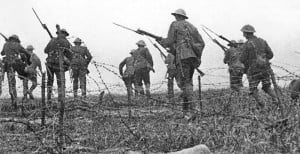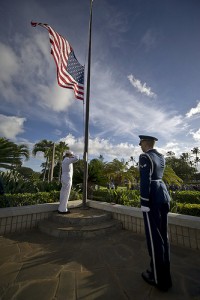The End of the War in the Pacific
On July 26, less than three months after the unconditional surrender of the Nazis in Berlin, bringing the War in Europe to an end, the United States government offered the Japanese an ultimatum. Accept unconditional surrender or face “prompt and udder destruction”. Unwilling to surrender, the Japanese continued on with their war efforts, refusing to admit defeat. With the United States fearing a costly invasion of the Japanese homeland, they went forward with one of the most influential plans in the history of warfare. On August 6, 1945, the Enola Gay, a B-52 bomber, was loaded with Little Boy, a bomb filled with 61 kilograms of highly-volatile uranium, at a nearby naval base. At 8:09 Hiroshima time the Enjola Gay began the most influential bombing run in military history.
At 8:15 the Enola Gay dropped it’s payload over Hiroshima. Due to a strong crosswind the bomb missed it’s target of Aioi Bridge and instead detonated over the Shima Surgical Clinic. The bomb exploded, generating a blinding flash of light, and incinerating everything in a mile radius. Seventy to eighty thousand people died instantly with 20,000 of those Japanese soldiers. Within the coming days, 50,000 people would die of their injuries and radiation sickness. But in the face of destruction unlike anything the world had ever seen, the Japanese still refused to surrender.
Invasion was not an option. Too many good soldiers, good men, would die. The Japanese were master defenders, creating trenches and foxholes, taking land from the Japanese was living hell. So the American government made a decision that would change the lives of millions. They were going to drop another bomb. One more powerful than the first, Fat Man, containing 6.4 kg of Plutonium, was dropped on the city of Nagasaki. 40,000 people were killed and 70,000 were injured and within days the Japanese unconditionally surrendered, and the war was finally over.



